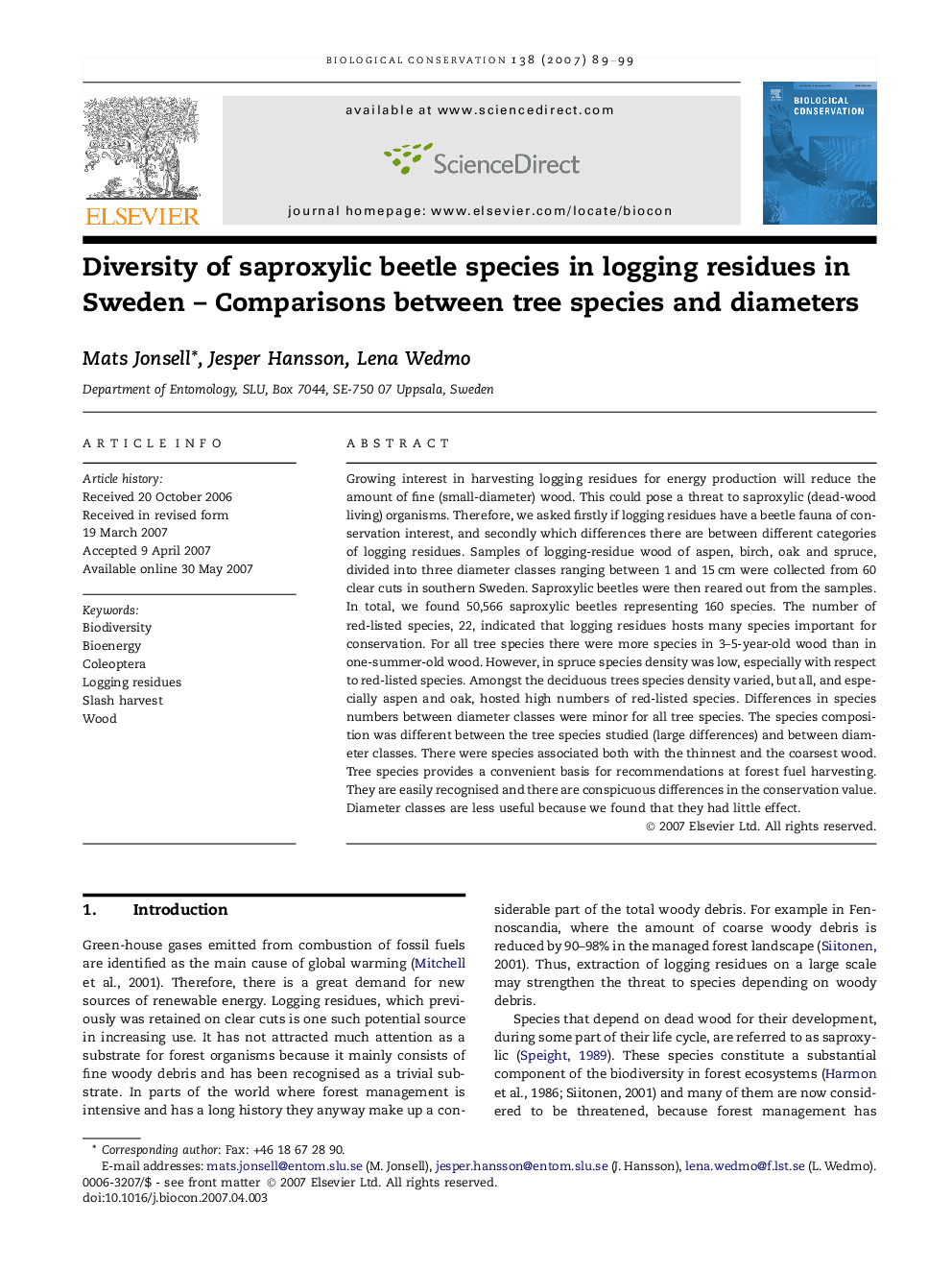| کد مقاله | کد نشریه | سال انتشار | مقاله انگلیسی | نسخه تمام متن |
|---|---|---|---|---|
| 4387251 | 1617956 | 2007 | 11 صفحه PDF | دانلود رایگان |

Growing interest in harvesting logging residues for energy production will reduce the amount of fine (small-diameter) wood. This could pose a threat to saproxylic (dead-wood living) organisms. Therefore, we asked firstly if logging residues have a beetle fauna of conservation interest, and secondly which differences there are between different categories of logging residues. Samples of logging-residue wood of aspen, birch, oak and spruce, divided into three diameter classes ranging between 1 and 15 cm were collected from 60 clear cuts in southern Sweden. Saproxylic beetles were then reared out from the samples. In total, we found 50,566 saproxylic beetles representing 160 species. The number of red-listed species, 22, indicated that logging residues hosts many species important for conservation. For all tree species there were more species in 3–5-year-old wood than in one-summer-old wood. However, in spruce species density was low, especially with respect to red-listed species. Amongst the deciduous trees species density varied, but all, and especially aspen and oak, hosted high numbers of red-listed species. Differences in species numbers between diameter classes were minor for all tree species. The species composition was different between the tree species studied (large differences) and between diameter classes. There were species associated both with the thinnest and the coarsest wood. Tree species provides a convenient basis for recommendations at forest fuel harvesting. They are easily recognised and there are conspicuous differences in the conservation value. Diameter classes are less useful because we found that they had little effect.
Journal: Biological Conservation - Volume 138, Issues 1–2, August 2007, Pages 89–99